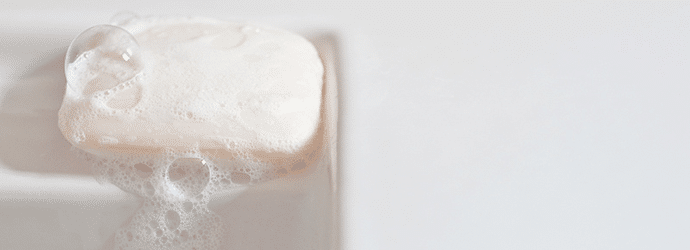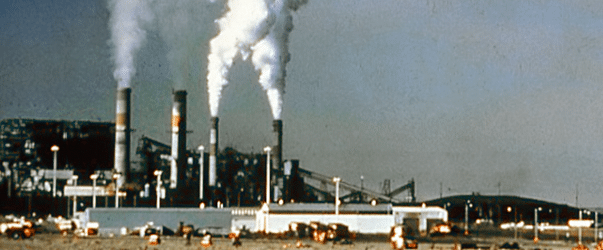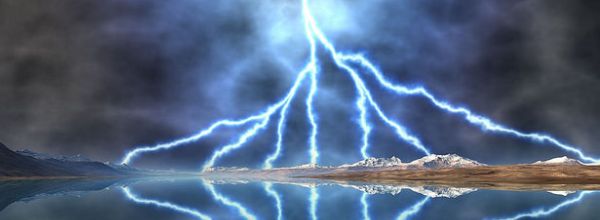Have you ever bought a kit from a biotechnology company and followed the instructions only to realize you’re not sure why you’re doing certain steps in the prescribed way? Has the process ever gone wrong, leaving you wishing you knew what each chemical does?
I usually use a kit to perform nuclear extraction. I’m sure most of us do.
Unsurprisingly, many of these kits don’t provide information on the composition of their reagents or explain their purpose.
As a result, we usually follow kit instructions without knowing why certain steps are performed—and that isn’t a great way to do science.
Let’s put an end to this, for nuclear extraction, at least. Here’s a reliable and annotated nuclear extraction protocol that tells you what the reagents do, the steps to follow, and why. Plus, you’ll learn some tips to boost the yields of your extractions!
What Is Nuclear Extraction?
Nuclear extraction is the process of separating the nuclear and cytoplasmic fractions of a cell. [1] It’s an alternative to whole-cell lysis protocols such as those using radioimmunoprecipitation assay (RIPA) buffers.
Whole-cell lysis simply blasts the entire cell resulting in a mixture of cytoplasm and nucleus, meaning we end up with loads of unwanted cellular gubbins floating about.
Nuclear extraction is useful when we study molecules that specifically interact with the nucleus, such as transcription factors that bind DNA.
A Simple 6-Step Protocol For Nuclear Extraction
Before starting, You’ll need to go and prepare cytoplasmic and nuclear extraction buffers as per the recipes in Table 1 and Table 2 below. Then, follow the steps below and keep your samples on ice at all times.
- Harvest cells by trypsinizing or scraping. Then rinse them with phosphate-buffered saline (PBS). Do this as you would normally harvest cells for whole-cell lysis. Include protease and phosphatase inhibitors at this stage.
- Suspend the cell pellet in 500 µL of cytoplasmic extraction buffer. It’s hypotonic and bursts the cell wall but keeps the nuclear membrane intact.
- Add a detergent, such as 0.05% NP40, and vortex to separate the nuclei from the cytoplasmic fraction. SDS is not recommended as it is denaturing, so the extracted proteins will not be in their native form.
- Centrifuge the solution and collect the supernatant. This should contain the cytoplasm.
- Resuspend the pellet (which contains nuclei) in 400 µL of nuclear extraction buffer and vortex every few minutes for 30 minutes. This bursts the nuclear membrane. Note that you can include glycerol during this step to preserve the samples’ structure and function during freezing for future experiments such as electrophoretic mobility shift assays.
- Centrifuge at ~25,000g at 4°C for ~15 minutes and collect the supernatant (containing the nuclear fraction). The final pellet should just be cell membrane debris. Discard it when you’re confident you don’t need it.
Cytoplasmic Extraction Buffer Recipe
Table 1. Cytoplasmic extraction buffer recipe with explanations of what the chemicals do.
Reagent | Concentration | Purpose |
HEPES, pH 7.9 | 10 mM | Buffer. Maintains a stable pH. |
Magnesium chloride | 1.5 mM | Salt. Low concentration helps lyse cells (hypotonic) but is sufficient to keep polar species solublized by increasing the ionic strength of the solution. |
Potassium chloride | 10 mM | Salt. Purpose as above. KCl concentration can be increased to 60 mM and the magnesium chloride omitted. |
DTT | 0.5 mM | Reducing agent. Prevents damaging oxidation. |
EDTA | 1.0 mM | Chelating agent. Protects samples from degradation by chelating divalent cations. |
NP40 | 0.05% | Detergent. Helps lyse cells and solubilizes membrane fractions and lipids. Substitute with 0.05% IGEPAL® or Tergitol™. |
Nuclear Extraction Buffer Recipe
Table 2. Nuclear extraction buffer recipe with explanations of what the chemicals do.
Reagent | Concentration | Purpose |
HEPES, pH 7.9 | 5 mM | Buffer. Maintains a stable pH. Substitute for tris. |
Magnesium chloride | 1.5 mM | Salt. Helps keep polar species solublized by increasing the ionic strength of the solution. |
Sodium chloride | 300 mM | Salt. High concentration helps balance the nagative charge on DNA phosphate groups. Also increases the ionic strength of the solution. |
DTT | 0.5 mM | Reducing agent. Prevents damaging oxidation. |
EDTA | 0.2 mM | Chelating agent. Protects DNA from degradation by chelating divalent cations. |
Glycerol | 26% | Antifreeze agent. Disrupts the hydrogen bond network in water to stop it freezing and expanding into ice. |
Tips for Better Extraction
Even the best protocols might need modifying to suit difficult cases. Here are some top tips to optimize your nuclear extraction.
1. Experiment With Shearing to Boost Lysis
In the steps that break membranes (#2 and #5), you vortex your sample to facilitate lysis. However, vortexing sometimes isn’t enough. It can help to use a fine 25-gauge needle to help shear the cellular material.
2. Vortex and Incubate for Longer to Help Lyse the Nucleus
In the nuclear extraction step (#5), the nucleus can be difficult to lyse. Many protocols recommend vortexing every few minutes over a total period of 30 minutes to an hour. In my experience, increasing the vortexing and incubation times results in higher yields.
3. Experiment With Resuspension Volumes
Don’t always stick to the reagent volumes recommended by the kits.
Scaling down the volume of your nuclear extraction buffer will increase the nuclear protein concentration. This is necessary if you want to make nuclear and cytoplasmic extracts of comparable concentrations since there is almost always less total nuclear protein than cytoplasmic protein.
4. Collect Samples as You Go
No matter how experienced we are, things will go wrong now and then. Collect approximately 10 µL of the sample at each step, even if you don’t intend to use it or don’t suspect it contains anything valuable. And keep everything for now.
Analyze these samples via a suitable assay, such as the Bradford assay or any other method that detects your sample. This allows you to track your sample through the extraction process. Only when you have confirmed your sample is present in the fraction you expect it to be should you discard unwanted material!
How to Check Your Results
Once you’ve performed your nuclear extraction, how do you know you’ve actually got nuclei in the nuclear fraction and cytoplasm in the cytoplasmic fraction?
You can determine the purity of your extracts by doing a western blot for specific makers that we know specifically reside in each sample type (nucleus, cytoplasm, membrane, etc.).
Common nuclear sample-specific markers include:
- histones—the molecules DNA wraps itself around.
- TATA-binding protein—a protein that binds to TATA boxes on DNA.
Common cytoplasmic sample-specific markers include:
- Heat shock proteins—they usually found in mitochondria, not the nucleus.
- Vimentin— a cytoskeleton component.
Other Extraction Protocols
Knowledge is power. While we’ve just described an excellent protocol, your specific research area and sample type may necessitate a custom protocol amalgamated from several others to get the best results. With that in mind, here are three more you can take a look at:
- Abcam’s nuclear extraction protocol.
- Rockland’s nuclear extraction protocol.
- ThermoFisher’s nuclear extraction protocol.
Summarizing What We’ve Learned About Nuclear Extraction
Now you have an easy nuclear extraction protocol to which you can return. Why not bookmark the page for easy reference?
We hope that the descriptions of what each chemical does have cleared up some of the mysteries surrounding the commercial kits that we rely on.
Similarly, the troubleshooting and optimizing tips should get your troubleshooting on the right path when things go wrong and enable you to get the best yields.
Have you got any tips of your own you want to add? Have we missed a crucial protocol detail? Let us know in the comments section below, and we’ll add your suggestions to the article.
Want a printable version of this protocol, complete with the tips and buffer recipes to stick in your lab book or file away with your protocols? Download our free nuclear extraction protocol cheat sheet.
Originally published on July 2016. Reviewed and updated July 2020 and again in April 2023.
Reference
- Abmayr SM, Yao T, Parmely T, and Workman JL (2006) Preparation of nuclear and cytoplasmic extracts from mammalian cells. Curr Protoc Mol Biol Chapter 12:Unit 12.1






